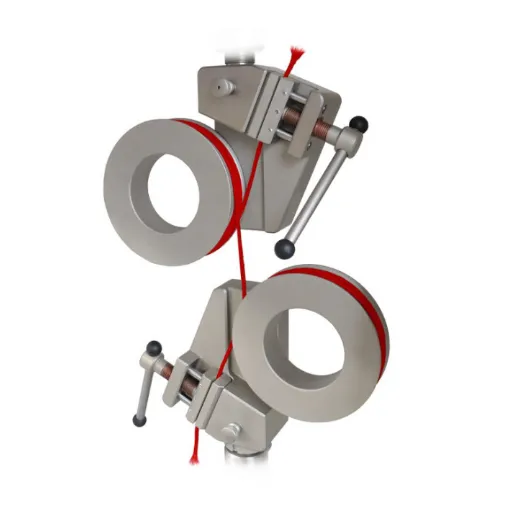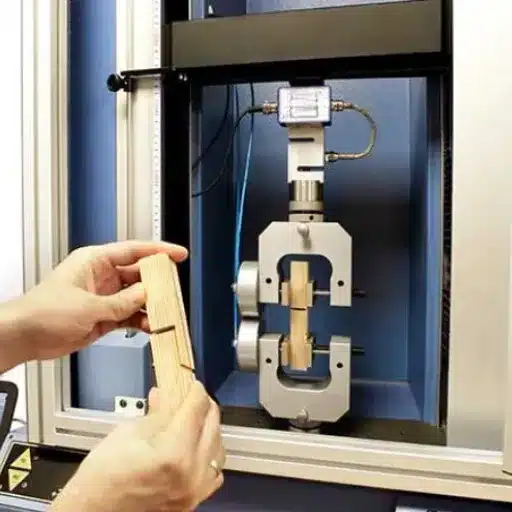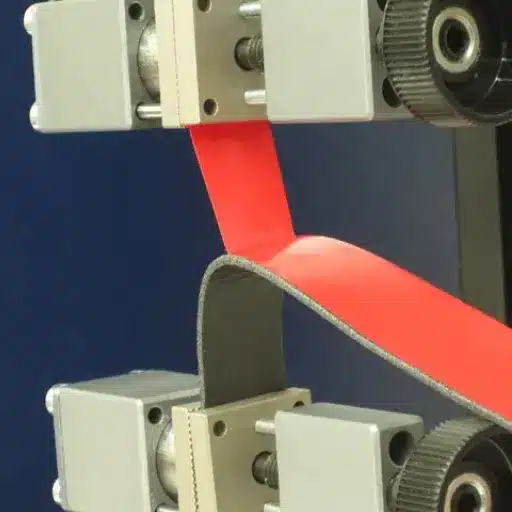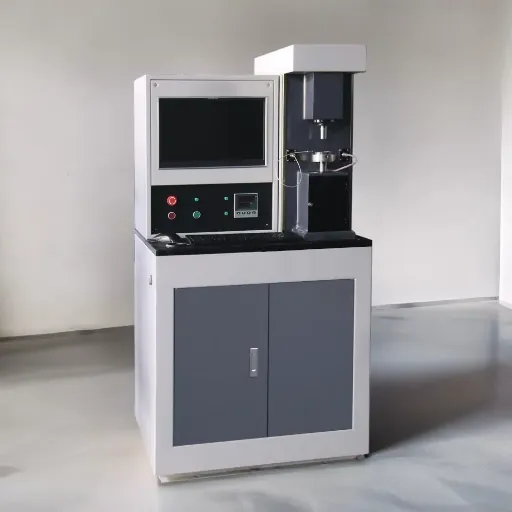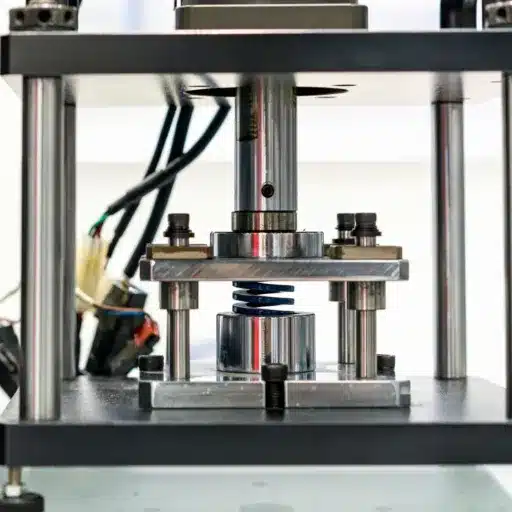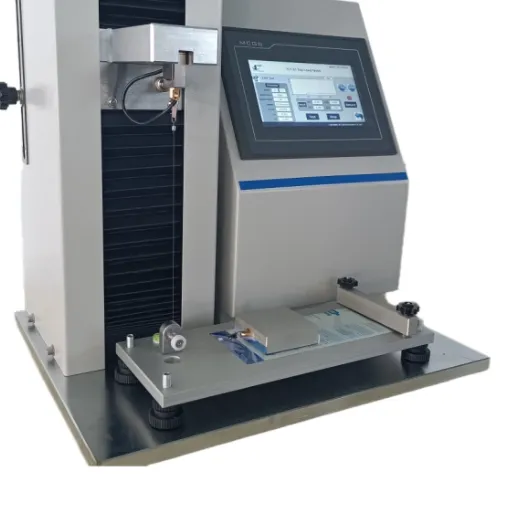In the world of manufacturing processes that deal with precision given, the most trustworthy and adaptable force test fixture solutions are very important. These ensure that products are of high quality, have durability, and meet industry standards. Technology has advanced and for that reason, the criteria and requirements for the industry have also changed. This has made it rather difficult to judge and select the test fixture required. This blog will therefore focus on recent innovations in force test fixture solutions; the importance of these test fixtures in modern test protocols; and tips on improving test methods for manufacturers. We will be looking at how these state-of-the-art test fixtures can maximize efficiency, lessen downtime, and maintain the highest level of quality within various applications.
Understanding Force Test Fixtures
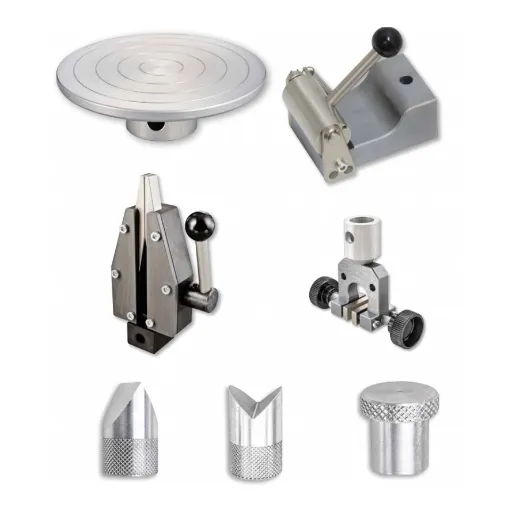
What is a Test Fixture?
A test fixture means a device or system specially designed to securely hold or support a test specimen during force or load testing procedures. The main purpose is to ensure that the test is carried out under consistent, controlled, and repeatable conditions, thus eliminating unnecessary factors that may tilt the results. Test fixtures for force measurement become essential when testing forces on materials, components, or products, depending on their accuracy.
In use in the manufacturing, aerospace, automotive, and medical device industries, force test fixtures help testing the strength, flexibility, or durability of a material or a product under a particular load condition of tension, compression, shear, and torsion. Being just the right setup, this fixture ensures safety and precision, making provisions for accommodating test specimens of varied shapes and sizes.
Proper test fixtures bring about higher stages of accuracy in testing, correct setup, and time-saving processes. A well-calibrated force test fixture ensures that the force applied is accurately imposed on the test specimen without any misalignment, which will otherwise nullify the test results. The force test fixtures are therefore applied to quality control and assisted in meeting standards within the industry to produce better and more consistent products.
The Role of Force Testing in Quality Assurance
With force testing equipment fixtures ensure upholding high standards in quality assurance by bringing about accuracy and consistency in the testing processes. These fixtures grip the test specimen to apply required forces during testing. Force testing fixtures set up geometrically the material or component to carry out the test and thus preclude errors stemming from misalignment, thereby unjust test reports or unreliable test reports. This level of precision is very much needed in industries where performance and safety of its products are critical.
Including force testing fixtures in a lab setup helps to meet the industry standards and regulation requirements. Various industries-certified for example, automotive, aerospace, and healthcare-require stringent testing procedures to confirm that their products meet stipulated standards. The force test fixtures help fulfill these requirements by standardizing the testing procedure for easier reproduction and firming up product performance against expectations. This means that the products will have a warranty of reliability irrespective of lots, notes, or production runs.
Besides, force testing fixtures help save costs and time during production. By having an optimized testing setup, the testing duration is reduced while keeping high accuracy. Thus, it wastes no time, improves productivity, and allows manufacturers to focus on continuous improvements in their operations. In effect, the force testing fixture is critical in producing products that are of supreme quality, highly reliable, and best meet the needs of consumers or comply with regulatory standards.
Types of Force Testing Solutions
These forces testing solutions are particularly specialized in measuring and testing forces acting on a product or material. They meet any requirement to offer the certainty of being accurate, reliable, and in line with industrial standards. They are divided into different types depending on their use and their mode of operation.
Compression Testing Fixtures
Compression testing fixtures test the ability of materials or products to resist compressive forces. A compression test evaluates how much pressure the material or product can take before it deforms or breaks. In this regard, compression tests are applied in packaging, construction, and other industries that involve a fair amount of structure to ensure the strength and longevity of a material or product.
Tension Testing Fixtures
Tension testing fixtures measure the amount of force needed to pull a material until it becomes deformed or broken. Such solutions are generally employed to test the tensile strength, elasticity, or ductility of materials such as metals, plastics, and textiles. Tension testing is essential for applications in which materials are subjected to stretching forces to ensure that safety and performance standards are met.
Universal Testing Fixtures
Universal testing fixtures combine both compression and tension testing, allowing for solutions across various applications. An adaptable fixture that can perform several tests involving forces on different materials. These universal systems find their application in industries that require broad analysis along with aerospace and automobile sectors, wherein two or more testing modalities need to be employed for quality assurance.
Applications Across Industries

Force Test Fixtures in Automotive Testing
Some more force test fixtures in the automotive sector are safety, reliability, and durability of automotive components. Forces with great accuracy are enforced upon test parts, like car seats, doors, steering wheels, and braking systems, by means of these fixtures. Material evaluation failures identified during testing and simulation under real operating conditions result in improved standards for safety and performance evaluation.
Force testing is used mainly for several applications in the automotive sector: the evaluations toward crash safety. Force test fixtures stress vehicle components at a high degree to validate their structural integrity, for instance, with airbags and seatbelts that should perform well in emergencies. Moreover, the fixtures are also used to determine material behavior under long use or in extreme conditions such as heat, cold, or vibration in automotive environments.
Another major application is assembly quality control in vehicles. A force test fixture is used for checking whether a certain part or component is assembled correctly and if the part and component can withstand the mechanical stresses that they will encounter during operation. It, for instance, measures the force for opening and closing doors or tests the suspension system for durability. This way, every component in the vehicle is qualified for product standards before it reaches the market, resulting in more capable and reliable vehicles for the consumers.
Aerospace Industry Requirements for Testing
Force testing fixtures act to ensure the safety and reliability of components used in an aerospace application. These fixtures are designed to test parts under conditions that simulate the mechanical stresses that would be present in the real world, ensuring that they truly stand the test of time, being functional. As with aerospace applications, force testing fixtures must be highly precise, highly repeatable.
Even high pressures, intense vibrations, or sudden forces arising from takeoff, flight, or landing may act on aerospace components. Force testing fixtures answer those challenges by applying measured mechanical forces to parts with very precise control of the force applied and then testing their responses to it. Fixtures may test critical components such as landing gear, materials for the fuselage, or fasteners to ascertain whether they meet load limiting requirements and structural integrity requirements under the most onerous conditions.
In observance of aerospace safety regulations, the designs of the testing fixtures usually have to comply with strict international standards. They must be sturdy and reliable, and they must serve to test parts with some specific geometry and material. The manufacturer would be able to, through the introduction of force testing fixtures in their QA cycle, place the least amount of risk on the consumer while largely furnishing satisfactorily performing parts demanded by aerospace operations.
Healthcare: Ensuring Precision with Custom Testing
Force testing fixtures are vital and critical to healthcare because they ensure that all medical equipment is accurate and reliable. These fixtures mainly test surgical instruments, implants, and diagnostic devices for strength, durability, and performance. By putting devices through real-world tests, these fixtures enable manufacturers to ensure that their products can meet severe safety and performance requirements before going into the market.
The customization of force testing fixtures also helps meet critical regulatory standards for the healthcare industry. Medical devices have to strictly follow guidelines in place to uphold patient safety, and the fixtures give a controlled environment for mechanical tests to be carried out in a consistent manner. This promotes the devices being able to withstand the sorts of forces they will be confronted with in clinical situations and thereby reduces the possibility of failure and improves patient outcomes.
In addition, force testing greatly minimizes variability and uncertainty amidst quality assurance procedures. Customizing testing fixtures according to a particular product design allows manufacturers to face challenges posed by unusual geometries and sometimes materials. The custom testing lessens error chances and also gives significantly detailed information to assist in further product development. Custom testing fixtures are, therefore, vital in ensuring the integrity of medical devices and keeping the public’s trust in health innovations.
Design and Innovation in Test Fixtures
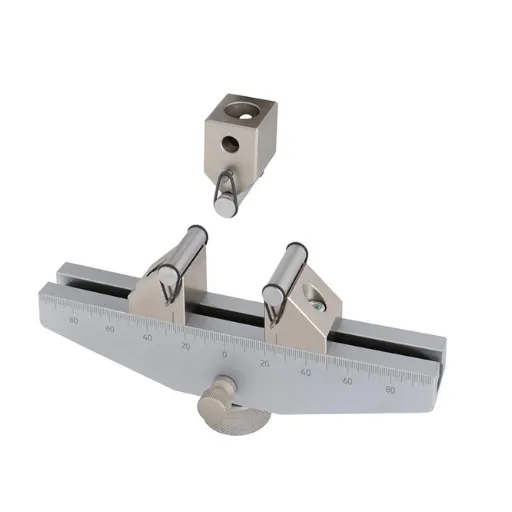
Custom Test Fixture Design Considerations
Force-testing hardware stands as an instrument to quantify the mechanical strength of a device or material under given load acting upon them. The force had to be consistently applied by these fixtures to provide meaningful and reproducible results. In the case of medical devices, it is necessary to test the endurance of the materials and compliance with safety standards, given the tests are often subjected to repetitive stresses during use.
In the design of a force testing fixture, the primary considerations should include conducting the test as closely aligned to the contemplated use of the device as possible. The fixture should securely hold the device while limiting any extra movement or action that would interfere with the accuracy of the results. It should also be adjustable in such a way as to allow a tester to alter the apparatus to test devices of varying sizes, shapes, or orientations without compromising the test.
Moreover, materials must be tough and durable such that, with repeated loading cycles, will remain intact without putting test environment contamination at risk. The force must be precisely applied by the force testing fixture to attain less chance of error in the supporting data for product development. A well-designed force testing fixture acts toward keeping compliance to a regulatory body and helps manufacturers ensure that their products perform to specification in real-life conditions.
Automated Test Solutions: Enhancing Efficiency
The force testing fixture is the most important device in automated test solutions to allow consistency during product testing. The Force Testing Fixture makes it possible for forces to be controlled and applied in a reproducible manner for testing the durability, safety, and performance of a product under real-world conditions. Integration of the forces testing fixture with the automation system enables manufacturers to streamline the testing procedure, minimize testing errors, and save precious time.
In the past, testing was done manually. The sample would be held by hand with attempt-so-far varying in force. Force testing machines help to apply uniform forces at specified intervals. These provide accurate, repeatable data with minimum damage to the specimens. Precision is paramount where strict regulatory standards apply. Accurate testing data can be used by manufacturers to refine their designs resulting in products that meet standards for safety and performance.
In turn, such solutions also increase the efficiency of testing by allowing continual testing without manual presence. Larger sample sizes and tests over long stretches of time can be handled by automated systems that, therefore, shorten product development cycles. Coupled with advanced software, real-time data collection and analysis allow the engineer to pinpoint possible problems and make improvements quickly. These automated force testing fixtures are thus fostering innovation while ensuring reliability and compliance in various industries.
In-Circuit Testing and Its Importance
Force testing fixtures play a key role in assuring product durability and performance for various manufacturing sectors, aerospace, and even consumer goods. Testing systems carry out tests on materials and components, applying variants of controlled force against the object under test. Testing defines limits in strength, elasticity, or, in extreme cases, points of failure, so engineers can use these values while working on product development.
Automated force testing fixtures modernize the process of force testing by offering results with high repeatability and reliability. The major advantages automated systems have over manual operations are as follows: reduction of human error, increased test life, and statistical analysis of failures over longer periods. Engineers rely on these systems to ensure that products meet quality and standards requirements; in turn, customers can expect certain levels of product performance and safety implementations.
The very force test is vital to prevent a failure or end of life of the product. Weaknesses, when observed in the first stage of design, will allow companies to save on recall costs and make them competitive in the market. Such fixtures are instrumental for innovation, quality standards, and applications relying on the physical testing environment.
Quality and Reliability in Testing Solutions
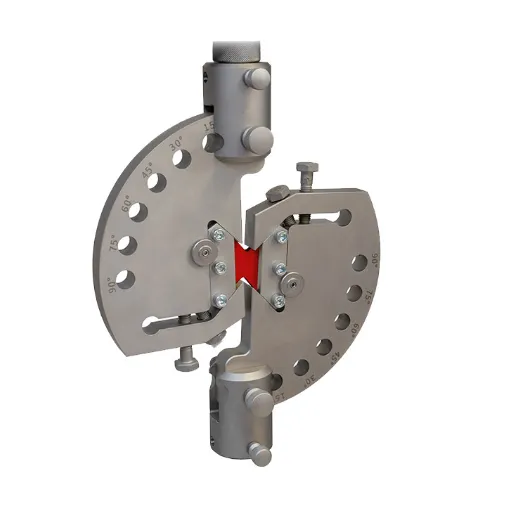
Choosing a Reliable Manufacturer
Reliability in a force testing fixtures manufacturer entails concentrating on the manufacturer and its technical expertise in the field. Those manufacturers who can demonstrate an ability to design testing machines of superior quality are therefore offering a much more reliable and durable solution. A manufacturer that has force-testing as its main focus should have a wide variety of fixtures for different applications, making it adaptable to your testing needs.
Another point to consider is quality assurance and certificates maintained by the manufacturer. Reliable manufacturers follow an industry standard and guidelines to ensure that their fixtures stick to specific performance and safety criteria. Looking for certifications or adherence to auspicious testing protocol might help make sure that the products you invest in will not only be dependable but meet your requirements as well.
Lastly, there are factors to consider regarding the quality of customer support and service provided by the manufacturer. Offering technical assistance, which extends to post-sale service and customization, is surely indicative of a respected partner. An esteemed manufacturing company will focus on customer satisfaction by assisting you with the evaluation, installation of fixtures, and even maintenance so that you can obtain accurate and consistent testing results. It is after evaluating these factors that one should be able to conclude as to the long-term solution for force testing.
Quality Test Fixtures: Meeting Industry Standards
Force-test fixtures assure precision and dependability in various applications by meeting the stringent industry standards. Mounting fixtures hold samples during tests, trying to minimize any variables that could affect the results, and hence, maintain consistency. Following well-accepted standards, like ASTM or ISO, guarantees that the force test results are precise, reliable, and accepted globally. Such fixtures are, therefore, unthinkable in the industries-kernel automotive, aerospace, or medical-where accuracy and safety are paramount.
To comply with industrial standards, the quality test fixtures should be constructed from durable materials for longevity and resistance to wear after repeated use. They must also be able to house test specimens so that a smooth alignment is possible. Aside from that, these fixtures should allow for adjustments in order to cater to different sizes and shapes. If a fixture is easy to use and adaptable, it will result in fewer setup errors and enhanced productivity. Regular calibration of these test fixtures is also required to conform with the industry protocols and ensure attainment of standard performance.
Also, it is crucial to collaborate with engineers who have been focusing on robust engineering to tailor fixtures to meet special testing requirements. Selecting compatible fixtures that go with the equipment and test parameters results in higher force measurement accuracies and less variance in those results. Force testing fixtures are in a position to consistently meet and exceed industrial norms for reliable performance in both research and industrial environments when they employ the highest quality materials, design processes, and maintenance schedules.
Case Studies: Successful Implementations
Automotive Component Testing
One of the crucial examples that underline the use of these forces testing fixtures, while implementing, is the automotive divide. Testing equipment is provided with facilities for establishing standards for components such as seatbelts, airbags, and suspension systems for the utmost durabilities. Using very special fixtures, manufacturers reproduce forces exerted during real-life operational usages so that the designs comply with safety regulations. The fixtures ensure that the tests are performed in a strictly standardized manner, which in turn improves the reliability of the product and reduces the chances of failure during operation.
Medical Device Validation
For testing, a fixture is an essential element: used to exert force on the specimen being tested. In the medical field, that testing movement every so often checks on the very performance and safety of medical devices. For example, such fixtures may measure the force needed to actuate a surgical instrument or test the ability of prosthetics to withstand stress that is cyclically applied to them. These tests are necessary-surely-to ensure that the medical devices can be relied upon by the manufacturers to meet the exacting standards laid down for the safety of the patients and will also be able to function consistently during the entire time of usage.
Consumer Product Quality Assurance
Force testing fixtures find one of their other main uses in the consumer goods domain. They are involved in the quality assurance process, beginning with the strength assessment of packaging material and ending with durability determination of household appliances. Having provided businesses with accurate and repeatable force measurements, these force testing fixtures ensure that products are built to meet customer expectations and norms, thus enhancing the brand reputation while minimizing product returns.
These cases portray how force testing fixtures are versatile and thus extremely important in ensuring that various products are reliable, safe, and durable across different domains.
The Future of Force Testing and Fixtures
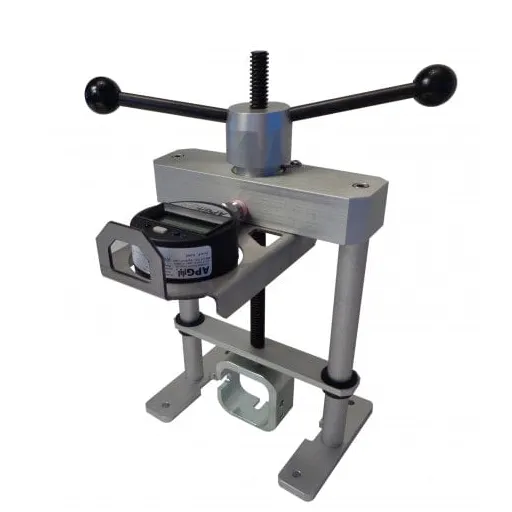
Emerging Trends in Test Solutions
Force testing fixtures keep adapting to the needs of modern industries. One major trend has been the notion of bringing in high-tech areas of science and engineering-automation, for example-into the testing procedure. Automated testing leads to a better level of precision, and there is an interplay of vision and efficiency-making the way for human error while creating opportunities to streamline mundane processes. Robotics is also used to recreate complex real-life situations that can then be analyzed in detail for product performance.
One of the major trends is the integration of data analytics and digital tools in tests of strength. The advanced sensors and real-time monitoring work together for precise collection of performance data. This data is analyzed by utmost software for conversion to actionable insights. In terms of predictive analysis, companies work to detect failures before they ever happen, thus reducing cost of recall or repairs and ensuring long-term reliability.
Lastly, putting focus on the development of eco-friendly and sustainable testing solutions has been all the rage in recent years. Hence the manufacturers went on to design fixtures from sturdy and reusable materials so as to lessen waste generation and thus environmental effect. Furthermore, energy-efficient processes are introduced, which also align with global sustainable development goals. Such practices also facilitate in meeting environmental compliances while showcasing their intent toward responsible and ethical manufacturing practices.
Advancements in Hardware and Software Integration
The developments in hardware and software integration in force testing fixtures resulted in major forces that needed to be considered for the adjustments in the interrelation between hardware and software.
With today’s fixtures equipped with highly accurate sensors and actuators, one can ensure a high level of accuracy in measuring forces, loads, and stresses. From the standpoint of hardware, these improvements enhance force testing to the extent that test results are reliable and repeatable, which is crucial for quality control in manufacturing and product development.
Then, on the hardware side, machine-force testing fixtures also have the most intuitive user interfaces and sophisticated data analysis tools. Such systems can acquire and analyze huge amounts of data and provide real-time insight into the performance and wear of a material or product under test. These systems also integrate seamlessly with wide-area manufacturing and research systems, allowing smooth data transition at the manufacturing and testing time, thereby ensuring standards across all stages of testing.
All these developments have preceded the streamlined force testing job through the combination of advanced hardware and software, reducing the time period and maximizing efficiency. This synergy favors the test’s precision as well: by test being more accessible, even complicated analyses can be done with ease and dependability. These advances have kept pace with the demand for state-of-the-art solutions, sustainability, and precision in contemporary engineering and research fields.
Preparing for Future Testing Demands
A force testing fixture is a critical part employed to securely hold objects during force application tests and ensure the attainment of precise measurements. This fixture must be designed with a focus on stability and adaptability toward the various types of samples to avoid many other variables from entering into the results. This reliability gives a way to the accurate analysis of materials and products in many industries.
A few other factors affecting speciation of the fixture are the size of the force, the type of force application, the degree of displacement, temperature requirements, and atmosphere conditions. All of the above-mentioned requirements must be precisely defined for a successful testing program.
In preparation for future testing needs, the design and function of a force-testing fixture should emphasize versatility and scalability. With continuous industrial growth and hence the emergence of new materials, fixtures ought to be adaptable to accommodate a newer variety of materials, shapes, and sizes. Modular design, furthermore, displays a distinct advantage when integrating with an advanced testing system or being customized for specific test requirements. Such a new development ensures the relevancy of fixtures and the capacity to handle extraordinarily complicated testing scenarios.
Sustainability is another critical aspect. Future designs shall take into use environmentally friendly materials while they undergo energy-efficient manufacturing processes and maintain good durability. Long life and minimal waste align with the global sustainability movement. In order to give industries reliable tools for accurate and efficient experimentation that supports advances in engineering and research, innovative, adaptable, and sustainable force testing fixtures have to be developed.
Frequently Asked Questions (FAQ)
Q: What are test fixture manufacturers?
A: Test fixture manufacturers are companies specialized in the design and production of test fixtures that hold and support products during the testing process. These fixtures allow the products such as PCBs and electrical components to be accurately and efficiently tested in functional test systems.
Q: How do force testing fixture manufacturers facilitate the validation of products?
A: Force testing fixture manufacturers are instrumental in product validation, providing test solutions that ensure proper electrical contact and reliability during testing. Their fixtures allow functional test setups to be performed with high accuracy so that engineers can validate products either as prototypes or in production tests.
Q: What type of industries uses test fixture kits?
A: Various industries, including electronics and manufacturing, depend on test fixture kits. They are used to test PCBA-printed circuit board assembly, and the components-every product, ensuring that what comes out of the factory is functional and dependable.
Q: Why is in-house fabrication important to test fixtures manufacturers?
A: In-house fabrication means that test fixtures manufacturers can control quality and design. Thereby producing reliable test fixtures that, through processes such as CNC machining, can be custom-made for particular client needs while maintaining high precision.
Q: How is a manufacturer assuring the reliability of its test products?
A: Assurance of reliability of test products lies in the technique of thorough inspection and validation of the test products. Engineering staff develop and design actual test fixtures that, through many decades of experience, have complied with stringent standards in test performance and accuracy.
Q: What do you consider while designing and manufacturing a functional test fixture?
A: When designing and manufacturing a functional test fixture, considerations are given to the request for specific test points, the circuit arrangement, and the kind of PCB under test. Also, the possibilities for customization available to address the particular needs of the application should be considered.
Q: For how long have the major manufacturers of test fixtures been in the industry?
A: The leading test fixtures manufacturers have mostly been operating in the industry for over three-and-a-half decades. This extensive experience allows them to provide solutions of superior quality that meet the changing demands of electronics testing.
Q: What role does customer service play in selecting test fixtures manufacturers?
A: Customer service is essential when choosing for test fixture manufacturers, which will be instrumental during design, fabrication, and inspection. These reliable manufacturers treating customers with dignity and respect to allow them to be given the best possible solution for test needs.
Q: What is the process for the development of the customized test solution?
A: Generally, working out a custom test solution entails close cooperation between the client and the manufacturer’s engineering department, which involves defining requirements, creating schematics, prototyping, and iterative testing so that the solution meets the required specifications for an efficient test on electronics.

